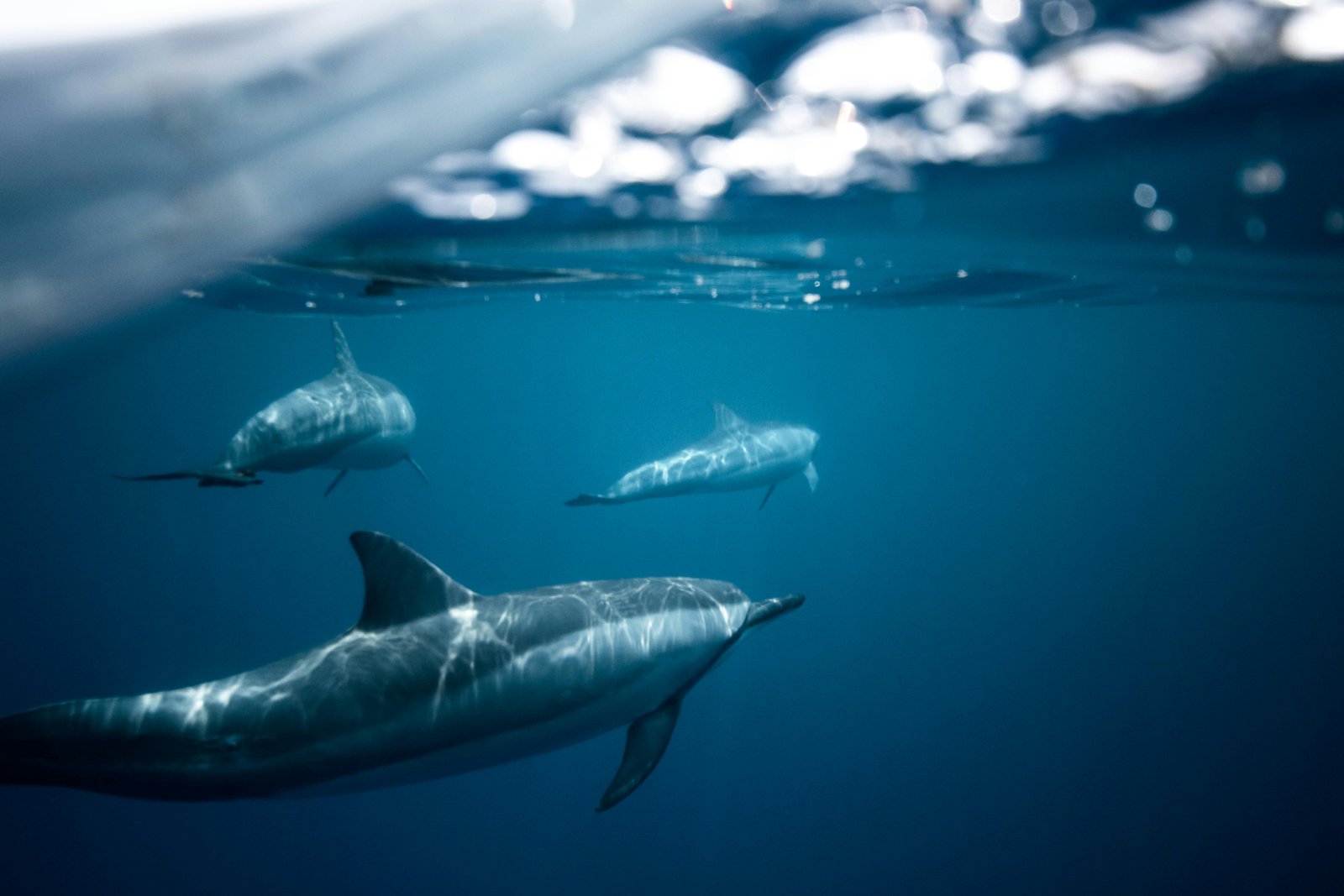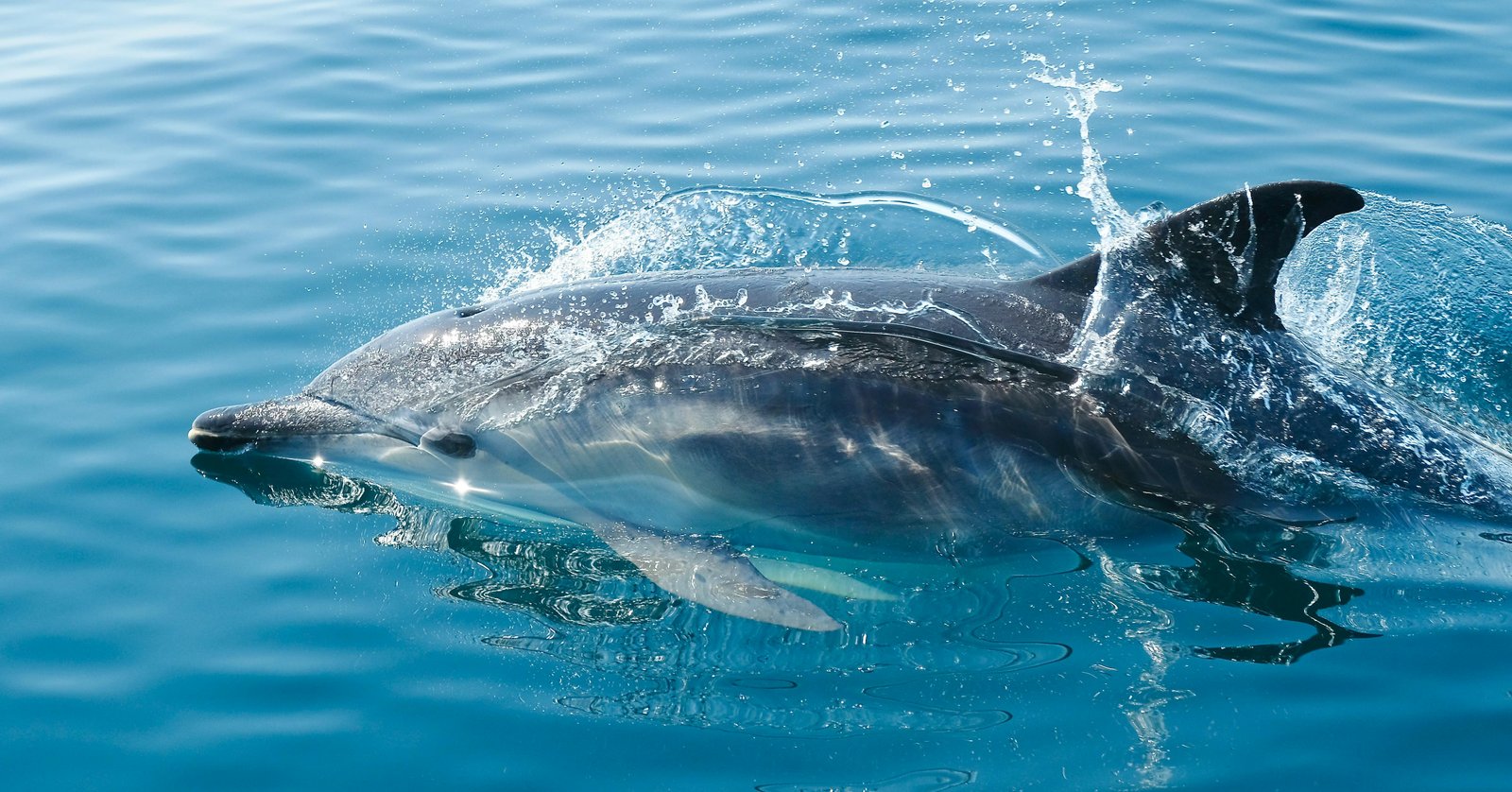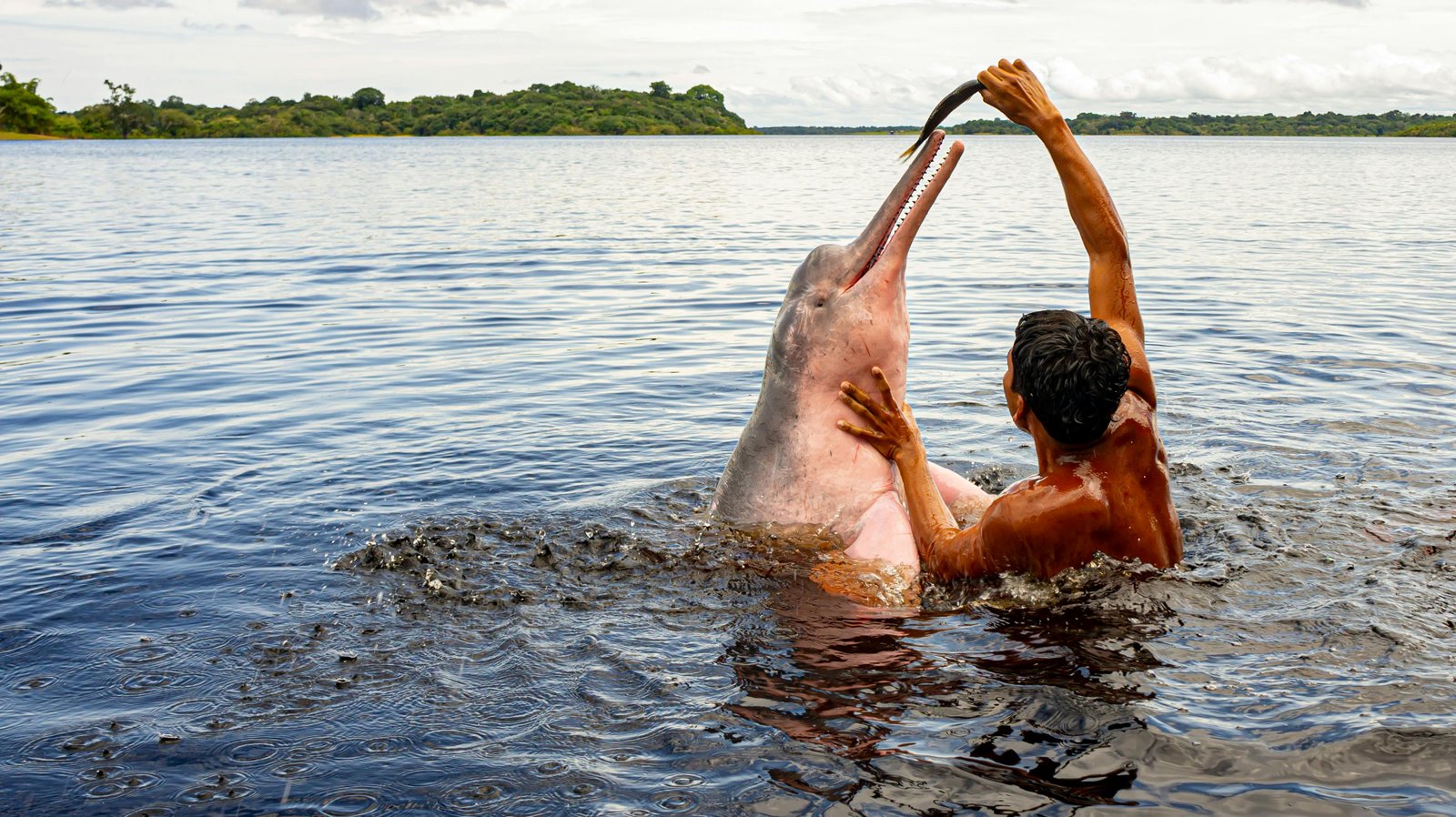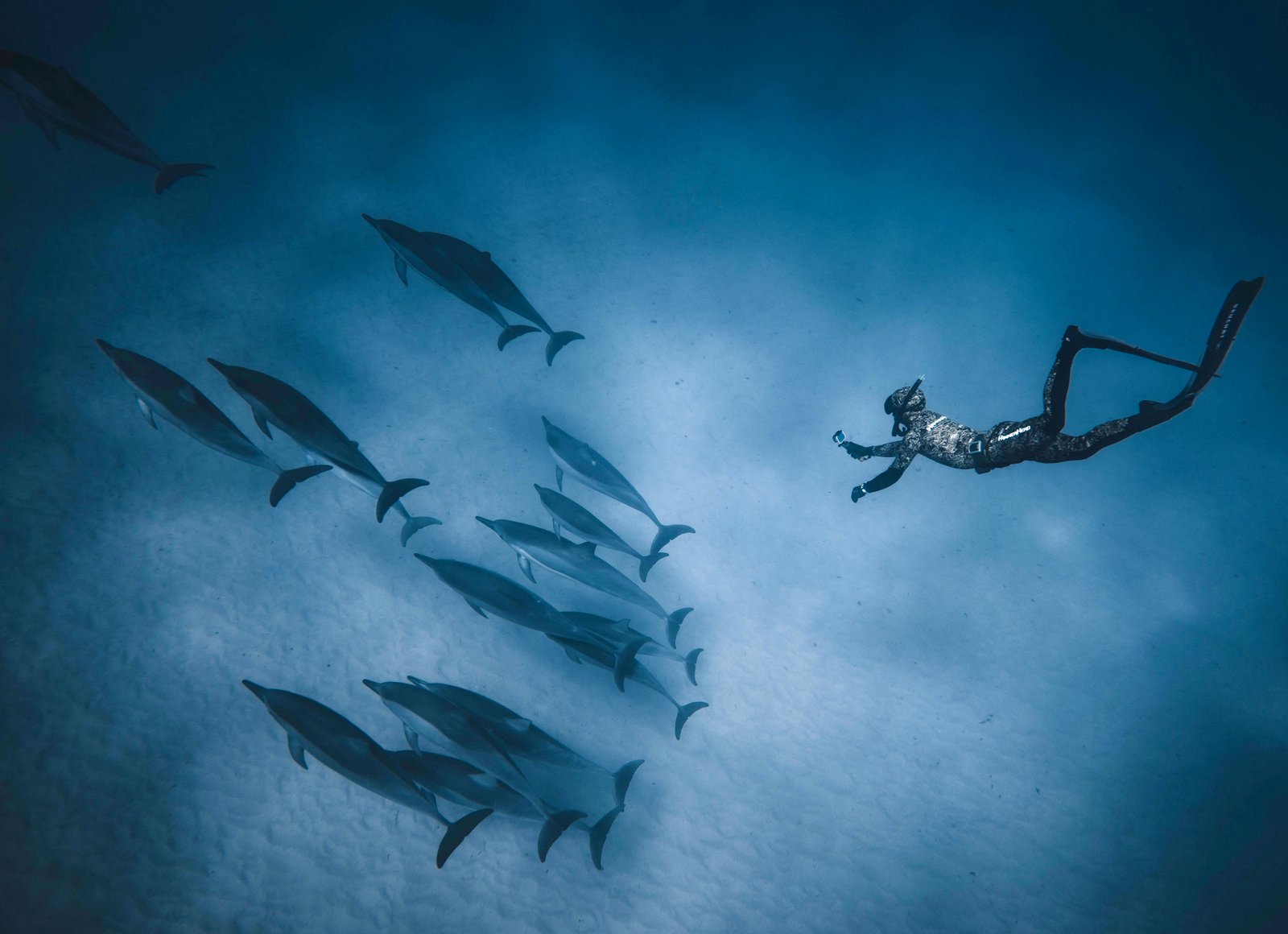
Dolphin is fascinating marine creatures that capture our imagination with their playful behavior and impressive intelligence. As part of the Cetacea family, dolphins are closely related to whales and porpoises. They play a crucial role in marine ecosystems, serving as indicators of the health of the oceans.
Dolphins are known for their complex social structures and advanced communication skills. With over 40 species, they inhabit various regions of the world’s oceans, from tropical waters to temperate seas.
Dolphin Communication and Behavior
How Dolphins Communicate
Dolphins use a sophisticated form of communication that includes echolocation and signature whistles. Echolocation helps them navigate and hunt by emitting high-frequency clicks and listening for the echoes. This method allows them to “see” their surroundings through sound.
Signature whistles are unique vocalizations that function similarly to names. These whistles help dolphins identify each other and maintain social bonds within their pods. Each dolphin has its own signature whistle, making their communication incredibly complex and effective.
Social Structures and Pods
Dolphins live in social groups known as pods. These pods vary in size and structure, ranging from small family units to large aggregations. Within pods, dolphins exhibit playful behaviors and cooperative hunting strategies. They work together to herd fish and protect each other from predators.
Dolphin Habitats and Migration
Natural Habitats of Dolphins
Dolphins can be found in a range of habitats, from coastal waters to the open ocean. They thrive in warm and temperate seas, though some species are adapted to colder waters. Coastal dolphins often frequent estuaries and bays, while open ocean species may travel vast distances across the seas.
Key Regions Where Dolphins Live
Some of the most notable regions where dolphins are commonly found include the Caribbean Sea, the Mediterranean Sea, and the Pacific Ocean. Each region offers unique environmental conditions and food sources that support different dolphin species.

Dolphin Migration Patterns
Dolphins are known to migrate seasonally in response to changes in water temperature and food availability. Migration patterns vary among species. For instance, some dolphins travel long distances to follow schools of fish, while others may move between feeding and breeding grounds.
The Diet and Feeding Habits of Dolphins
What Dolphins Eat
Dolphins primarily consume fish, squid, and crustaceans. Their diet can vary based on the species and their habitat. For example, bottlenose dolphins often feed on fish like mullet and sardines, while orcas may target larger prey such as seals and even other cetaceans.
Hunting and Feeding Techniques
Dolphins use a variety of techniques to catch their prey. These include herding fish into tight groups and strand feeding, where they drive fish onto the shore to make them easier to catch. Their hunting strategies highlight their high level of intelligence and adaptability.
Dietary Needs and Preferences
Dolphins require a balanced diet to maintain their health. Their feeding habits are influenced by their environment, seasonal changes, and the availability of prey. Dolphins may adjust their diet based on what is accessible and nutritious.

Dolphin Conservation Efforts
Threats to Dolphin Populations
Dolphins face several threats that impact their populations. Pollution, habitat loss, and bycatch in fishing nets are major concerns. Pollution can contaminate their food sources and disrupt their habitats, while bycatch can lead to accidental deaths.
Current Conservation Initiatives
Numerous organizations are working to protect dolphins through various conservation efforts. These include marine protected areas, anti-pollution campaigns, and sustainable fishing practices. Collaborative efforts aim to address the threats and improve the overall health of dolphin populations.
How Individuals Can Help
Individuals can contribute to dolphin conservation by supporting organizations focused on marine life protection, reducing plastic use, and promoting sustainable seafood choices. Every small action counts in making a difference for these remarkable creatures.
Differences Between Dolphins and Porpoises

Physical Differences
Dolphins and porpoises, while similar, have distinct physical differences. Dolphins typically have longer, more tapered bodies, while porpoises have shorter, more rounded shapes. Their teeth also differ; dolphins usually have conical teeth, whereas porpoises have spade-shaped teeth.
Behavioral Differences
Behaviorally, dolphins are known for their acrobatic displays and complex social interactions, while porpoises tend to be more reserved and less likely to perform aerial maneuvers. Dolphins often travel in larger groups compared to porpoises.
Habitats and Range
Dolphins and porpoises occupy different habitats. Dolphins are found in a wider range of environments, including deep ocean and coastal areas, whereas porpoises are more commonly found in coastal waters.

The Intelligence of Dolphins
Cognitive Abilities of Dolphins
Dolphins are renowned for their high level of cognitive abilities. Studies have shown that they possess problem-solving skills, self-awareness, and the ability to understand complex commands. Their intelligence is often compared to that of great apes.
Studies on Dolphin Intelligence
Research into dolphin intelligence includes behavioral experiments, neuroanatomy studies, and cognitive testing. These studies reveal the depth of their understanding and ability to learn new tasks.
Problem-Solving and Tool Use
Dolphins are known to use tools in their natural habitat. For example, bottlenose dolphins have been observed using sponges to protect their snouts while foraging on the seafloor. This behavior demonstrates their ability to innovate and adapt.
Interactions Between Dolphins and Humans

Historical and Cultural Significance
Dolphins have long fascinated humans, appearing in myths, legends, and art across various cultures. Their playful nature and intelligent behavior have made them symbols of good fortune and guidance in many societies.
Dolphin Watching and Tourism
Dolphin watching has become a popular activity, allowing people to observe dolphins in their natural environment. Responsible tourism practices are essential to ensure that these activities do not negatively impact dolphin populations.
Ethical Considerations in Dolphin Interaction
Interactions with dolphins, whether in captivity or the wild, raise ethical concerns. It is crucial to consider the welfare of these animals and avoid practices that may cause stress or harm.
Fun Facts About Dolphins
- Dolphins can swim at speeds up to 37 miles per hour.
- They have been observed using tools, such as sponges, to protect their snouts.
- Dolphins sleep with one half of their brain at a time, allowing them to stay alert.
Future Directions in Dolphin Research
Emerging Studies and Technologies
Future research on dolphins is likely to focus on new technologies for studying their behavior and communication. Innovations such as underwater drones and advanced tracking systems will provide deeper insights into their lives.
Potential for Conservation Innovations
Emerging conservation strategies may include new methods for reducing bycatch, improved pollution control, and enhanced marine protected areas. These innovations aim to address the ongoing challenges faced by dolphin populations.

Collaborative Efforts in Dolphin Research
Collaboration between scientists, conservationists, and policymakers will be crucial in advancing dolphin research and conservation efforts. By working together, we can enhance our understanding and protection of these incredible animals.
Conclusion
Dolphin is incredible creatures with complex communication and social structures. By understanding their behaviors, habitats, and the threats they face, we can better protect these amazing animals. Share your thoughts in the comments, explore more articles on our site, and help spread awareness about dolphin conservation.
FAQs about Dolphin
What Are the Different Species of Dolphins?
Dolphins come in various species, each with unique characteristics. Some well-known species include the bottlenose dolphin, orca (killer whale), and common dolphin. Each species has adapted to its specific environment, leading to diverse physical traits and behaviors. For instance, the bottlenose dolphin is famous for its friendly demeanor and high intelligence, while the orca is known for its size and predatory skills.
How Do Dolphins Communicate?
Dolphins communicate using a sophisticated system of echolocation and signature whistles. Echolocation involves emitting sound waves to locate objects and prey, while signature whistles function like names, helping dolphins identify and interact with each other. This complex communication system allows dolphins to coordinate with their pods and navigate their environments effectively.
What Do Dolphins Eat?
Dolphins primarily consume fish, squid, and crustaceans. Their diet can vary depending on their species and habitat. For example, bottlenose dolphins often feed on small fish like mullet, whereas orca dolphins might target larger prey such as seals. Dolphins use various hunting techniques, including herding fish and strand feeding.
What Are the Main Threats to Dolphins?
Dolphins face several significant threats, including pollution, habitat loss, and bycatch. Pollution can affect their health by contaminating their food sources and habitats. Habitat loss due to coastal development and environmental changes reduces their living space. Bycatch, where dolphins are accidentally caught in fishing gear, poses a direct danger to their populations.
How Can We Help Protect Dolphins?
Protecting dolphins involves supporting conservation efforts, reducing plastic pollution, and promoting sustainable fishing practices. You can contribute by supporting organizations dedicated to marine life protection, participating in clean-up efforts, and choosing sustainable seafood options. Every action helps in ensuring a safer environment for dolphins.